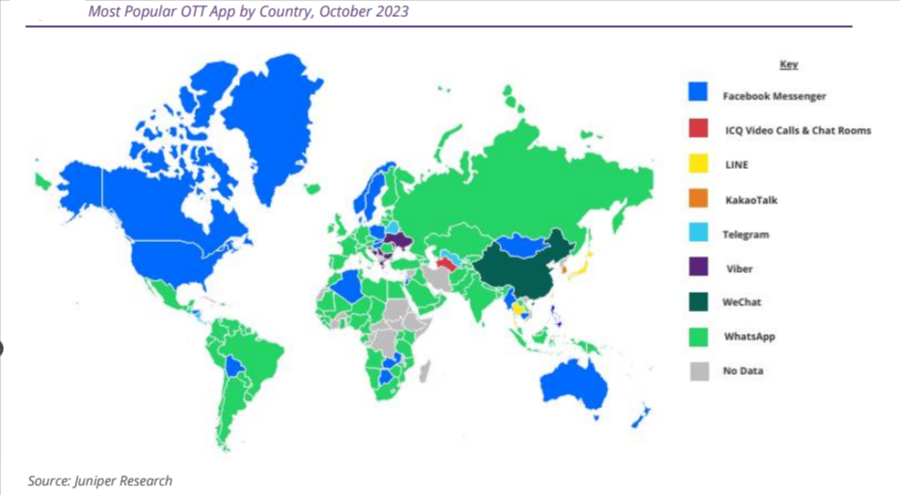
OTT or RCS: Which Conversational Commerce Channel will be the biggest by 2027?
Conversational commerce, a term coined by Chris Messina in 2015, assists customers throughout the entire purchasing journey. This includes pre-transaction, where a brand can offer promotions and recommendations to customers; during transactions, where a customer is making a payment; and post-transaction, which can include delivery updates, customer satisfaction, returns, and exchanges. Conversational Commerce Channel
This simplifies the purchasing journey for consumers since brands can make suggestions and answer queries within the conversation. This better reflects the customer experience of a brick-and-mortar store. Consumers want the convenience of shopping online. However, they also want the interaction with a brand that they would experience in-store. Thus, conversational commerce is expected to become increasingly popular among consumers, owing to the convenient and transparent customer experience. Conversational commerce also allows consumers to feel more connected to a brand and increases brand loyalty.
A new study from Juniper Research predicts that OTT messaging apps will remain the dominant channel for conversational commerce. This is despite a fall in the global market share of conversational commerce spending from 53% in 2024 to 45% in 2028.
Much of this spending will be driven by the advanced capabilities of OTT messaging apps, including interactive calls to action and rich media. These features will enhance the consumer experience, attracting high-spending users to engage in further commerce activity.
OTT business messaging enables enterprises to communicate with customers via third-party messaging applications.
OTT messaging apps, being standalone platforms, can move quickly to integrate new technologies, including AI-based personalisation for cross-selling and upselling opportunities. This will be imperative in high-spending industries such as retail, as OTT messaging apps will be deployed as part of an omnichannel marketing strategy alongside messaging channels like RCS (Rich Communications Services).
Conversational Commerce Channels
The different conversational commerce channels include chatbots, OTT messaging, RCS messaging and voice assistants. These channels are each useful to brands and enterprises for customer engagement. However, there are differences in popularity among consumers, particularly on a regional level.
Chatbots
Chatbots can be described as robot customer service agents, which allow customers to instantly connect to a brand. These chatbots can be text or speech-based and offer an alternative to live chat, which requires physical employees to respond to
customers. Chatbots can therefore be a time-saving solution for businesses and can improve the experience for customers, who get faster responses to queries.
OTT Messaging
OTT messaging apps are third-party apps that
allow messaging between users who have the app
installed. Brands and enterprises can also adopt OTT messaging as a way to engage with consumers,
often as part of an omnichannel approach. The penetration of OTT apps differs between countries, which therefore affects the likelihood that
consumers will engage in conversational commerce
across these messaging platforms.
RCS Messaging
RCS business messaging was standardized as a messaging channel in 2007 and is a type of rich messaging that is a richer alternative to SMS, for sending messages across a mobile operator network. RCS allows users to send and receive rich media
such as high-resolution images, videos and GIFs, and messages are also verified. RCS messaging is expected to grow over the next five years, as more mobile operators launch it and an increase in enterprise adoption occurs.
Voice Assistants
Voice assistants such as Siri, Alexa and Google Assistant allow consumers to engage in conversational commerce using their voice, and search and purchase products. This requires the consumer to have the technology in place for voice commerce, such
as smart speakers and smartphones. A preferred payment method will be preloaded onto the device, to make the purchasing process smoother.
Key Drivers of Market Growth
Since a bad customer experience can significantly affect brand loyalty, it is essential that brands provide customers with the best possible experience. Conversational commerce is expected to lead to increased customer satisfaction, a higher lead-to-conversion rate, and increased customer loyalty. These are the key benefits for businesses that are expected to drive increased adoption of conversational commerce over the next five years. Small businesses can also compete with larger businesses by deploying a conversational commerce strategy, as they can respond to customer inquiries more quickly due to a lower volume of traffic, and this improves the customer’s experience.
RCS to Be the Fastest-growing Conversational Commerce Channel
Despite the dominance of OTT messaging apps, RCS commerce spending is forecast to grow by more than 3,500% over the next five years, from $350 million in 2023 to $12 billion in 2028. This growth will be driven by the roll-out of RCS-capable devices, increased RCS operator support, and consumer availability.
Additionally, the report found the rich features of RCS, including brand verification, branded messaging, and rich carousels, will allow operators to compete with leading OTT messaging apps through RCS’ improved security and capabilities. This will foster consumer trust to engage in more sophisticated messaging use cases, such as conversational commerce.










